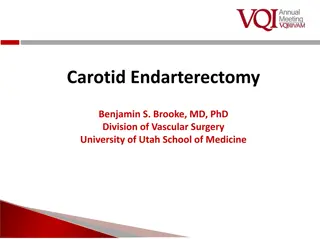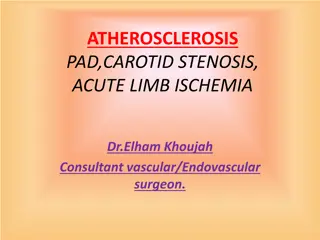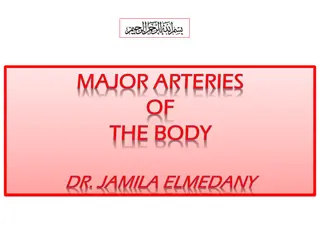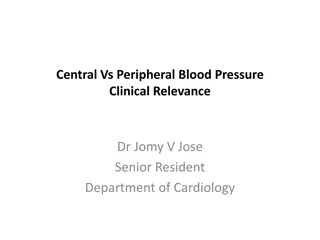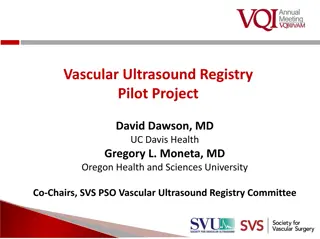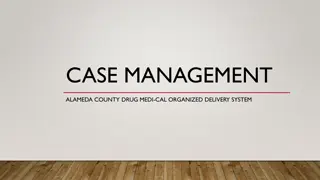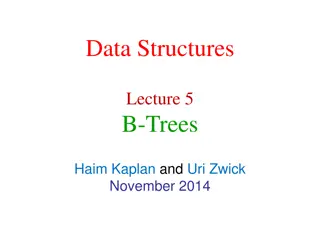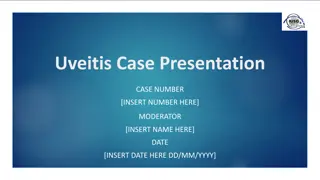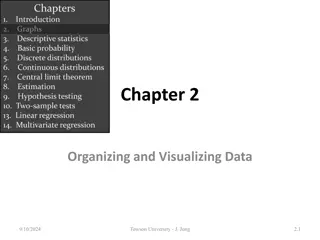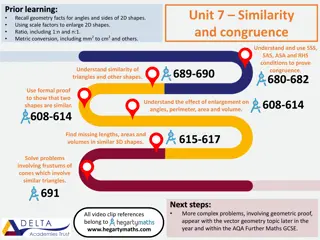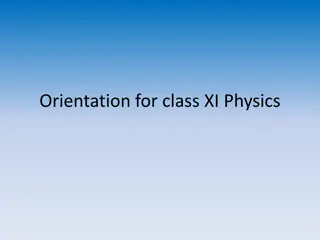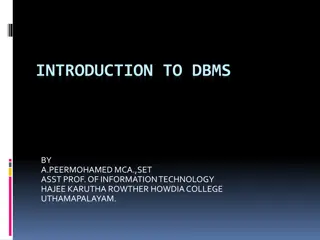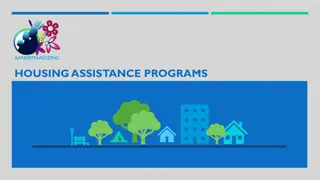Understanding Carotid Endarterectomy: A Comprehensive Overview
Carotid endarterectomy is a crucial vascular operation aimed at improving outcomes for patients at risk of stroke. This procedure targets the removal of plaque build-up in the carotid arteries to prevent further cerebrovascular events. The surgery's effectiveness is highlighted by its impact on reducing the incidence of stroke in high-risk individuals. This summary delves into the nuances of carotid endarterectomy, emphasizing the importance of timely intervention and the management of potential complications.
- Carotid Endarterectomy
- Vascular Surgery
- Stroke Prevention
- Surgical Procedures
- Cerebrovascular Disease
Download Presentation

Please find below an Image/Link to download the presentation.
The content on the website is provided AS IS for your information and personal use only. It may not be sold, licensed, or shared on other websites without obtaining consent from the author. Download presentation by click this link. If you encounter any issues during the download, it is possible that the publisher has removed the file from their server.
E N D
Presentation Transcript
AIMS OF THE TALK Vascular operations that may end up done by a non Vascular operations that may end up done by a non- -vascular anaesthetist vascular anaesthetist It s NOT rocket science! It s NOT rocket science! We don t need to be a separate specialty! We don t need to be a separate specialty! Carotid Surgery Carotid Surgery Aortic Surgery Aortic Surgery Peripheral Arterial Surgery Peripheral Arterial Surgery Amputations Amputations
CAROTID ENDARTERECTOMY Government targets Government targets originally 2 days now 2 weeks (NICE) originally 2 days now 2 weeks (NICE) May be seen on emergency lists and at weekends May be seen on emergency lists and at weekends Does NOT need a vascular anaesthetist! Does NOT need a vascular anaesthetist! DOES need a quality anaesthetic! DOES need a quality anaesthetic!
CAROTID ENDARTERECTOMY CVA CVA commonest cause of adult commonest cause of adult neurol neurol deficit deficit CVA CVA 3 3rd rdcommonest cause of death in UK commonest cause of death in UK Incidence in England and Wales >130,000/ Incidence in England and Wales >130,000/yr yr Cost 7b in 2005 Cost 7b in 2005 Studies show CEA improves outcome if >70% stenosis Studies show CEA improves outcome if >70% stenosis ACST showed improvement in ACST showed improvement in asympomatic asympomatic pts. pts.
CAROTID ENDARTERECTOMY Risk of further event is highest in 1 Risk of further event is highest in 1st st72 hours 72 hours High risk persists for >6 weeks High risk persists for >6 weeks CEA most effective if done within 2 weeks CEA most effective if done within 2 weeks The major complications intra The major complications intra- - and post incidence should be <5% in centres) incidence should be <5% in centres) and post- -op CVA, MI and death (combined 30 day op CVA, MI and death (combined 30 day GALA trial published 2008 GALA trial published 2008
CAROTID ENDARTERECTOMY The operation The operation eversion seldom done eversion seldom done
CAROTID ENDARTERECTOMY The operation The operation standard standard Shunt used where Shunt used where neurol neurol monitoring impossible monitoring impossible Monitoring methods used Monitoring methods used
GALA TRIAL Published 2008 Published 2008 Compared all types of GA with all types of LA Compared all types of GA with all types of LA Aimed n=5000 achieved 3500 Aimed n=5000 achieved 3500 Proved Proved No technique is better than any other No technique is better than any other Hinted... Hinted... CVA rate slightly higher under GA CVA rate slightly higher under GA Hinted Hinted MI rate slightly higher under LA MI rate slightly higher under LA What to choose? What to choose?
ITS NOT WHAT YOU DO Advantages General anaesthesia Disadvantages Lack of direct neurological monitoring during surgery Intraoperative hypotension Postoperative hypertension Increased rate of shunt use Immobility Potential for neuroprotection Controlled ventilation and CO2 Attenuated stress response Delayed recovery from GA may mask postoperative neurological complications Regional anaesthesia Risks associated with sitting blocks (deep cervical plexus blockade) Allows direct real-time neurological monitoring Patient stress/pain causing increased risk of myocardial ischaemia Avoids the risks of airway intervention Reduced shunt rate Restricted access to airway during surgery Reduced hospital stay Requires co-operative patient, able to lie flat Allows arterial closure at normal arterial pressure: may reduce risk of postoperative haematoma Risk of requirement to convert to GA during surgery
CEA - WHAT DO I DO? Surgeon there first then I do LA (he likes it) Surgeon there first then I do LA (he likes it) IVI, art line on contralateral side Superficial cervical plexus block (other blocks available) Positioning and catheter Sedation Monitoring BP control (during and after) Me there first or slow surgeon then I do GA Me there first or slow surgeon then I do GA As above with GA (careful!!) LMA? ETT? Pros and cons of each Block the carotid sinus nerve? Pros and cons Block the carotid sinus nerve? Pros and cons
CEA - WHAT SHOULD YOU DO? Don t be afraid! Don t be afraid! It s just a GA with attention to detail! Unless you really feel inclined to do LA It s just a GA with attention to detail! Unless you really feel inclined to do LA Choose an appropriate airway that YOU like Choose an appropriate airway that YOU like Try a block Try a block it s not hard! it s not hard! Be as smooth as you can and jump on BP (Aim for normal +20% when shunted) Be as smooth as you can and jump on BP (Aim for normal +20% when shunted) Consider blocking carotid sinus nerve Consider blocking carotid sinus nerve Consider a deep Consider a deep extubation extubation Control BP post Control BP post- -op +/ op +/- -20% of normal 20% of normal


